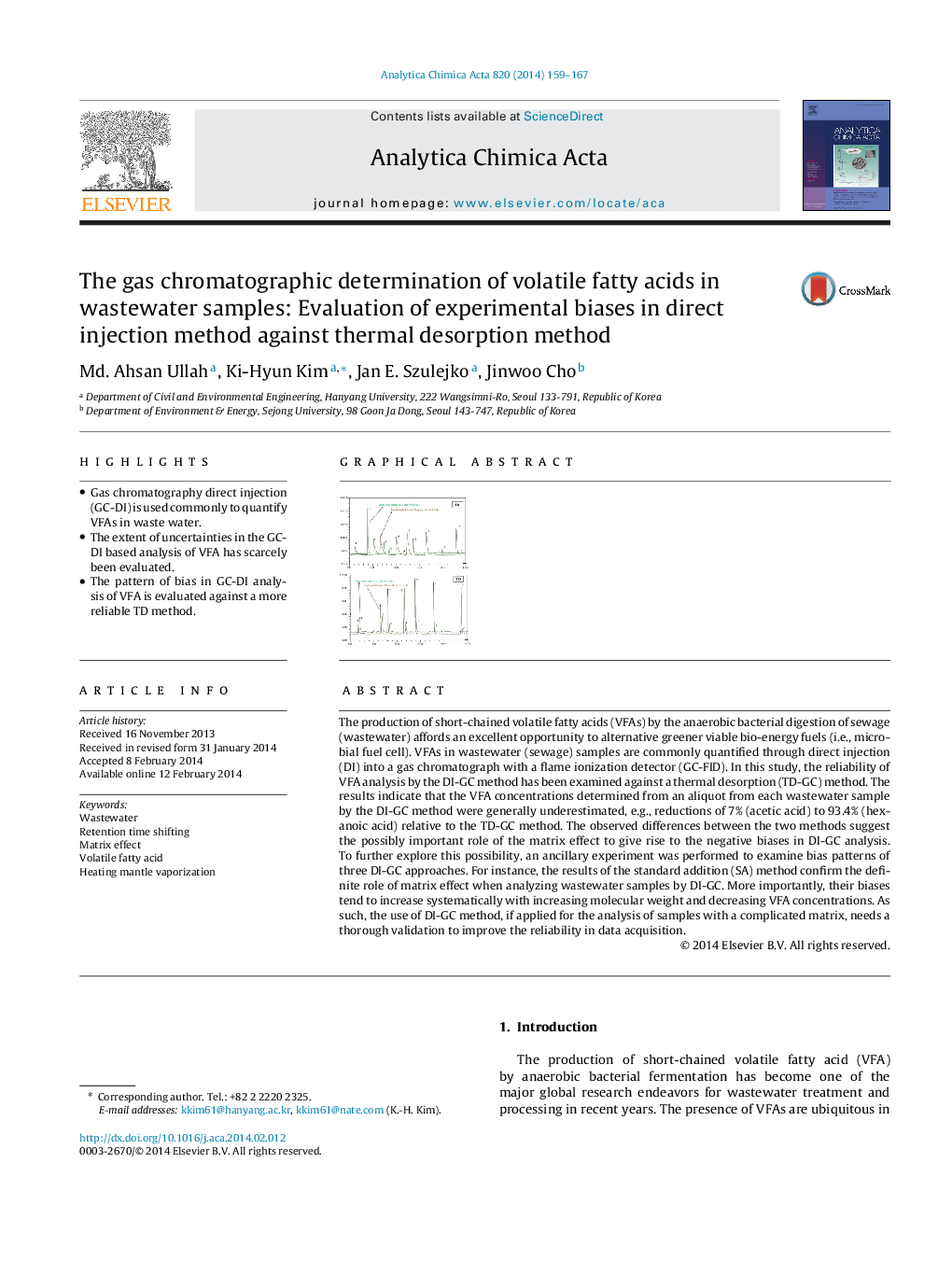| Article ID | Journal | Published Year | Pages | File Type |
|---|---|---|---|---|
| 1164212 | Analytica Chimica Acta | 2014 | 9 Pages |
•Gas chromatography direct injection (GC-DI) is used commonly to quantify VFAs in waste water.•The extent of uncertainties in the GC-DI based analysis of VFA has scarcely been evaluated.•The pattern of bias in GC-DI analysis of VFA is evaluated against a more reliable TD method.
The production of short-chained volatile fatty acids (VFAs) by the anaerobic bacterial digestion of sewage (wastewater) affords an excellent opportunity to alternative greener viable bio-energy fuels (i.e., microbial fuel cell). VFAs in wastewater (sewage) samples are commonly quantified through direct injection (DI) into a gas chromatograph with a flame ionization detector (GC-FID). In this study, the reliability of VFA analysis by the DI-GC method has been examined against a thermal desorption (TD-GC) method. The results indicate that the VFA concentrations determined from an aliquot from each wastewater sample by the DI-GC method were generally underestimated, e.g., reductions of 7% (acetic acid) to 93.4% (hexanoic acid) relative to the TD-GC method. The observed differences between the two methods suggest the possibly important role of the matrix effect to give rise to the negative biases in DI-GC analysis. To further explore this possibility, an ancillary experiment was performed to examine bias patterns of three DI-GC approaches. For instance, the results of the standard addition (SA) method confirm the definite role of matrix effect when analyzing wastewater samples by DI-GC. More importantly, their biases tend to increase systematically with increasing molecular weight and decreasing VFA concentrations. As such, the use of DI-GC method, if applied for the analysis of samples with a complicated matrix, needs a thorough validation to improve the reliability in data acquisition.
Graphical abstractFigure optionsDownload full-size imageDownload as PowerPoint slide
